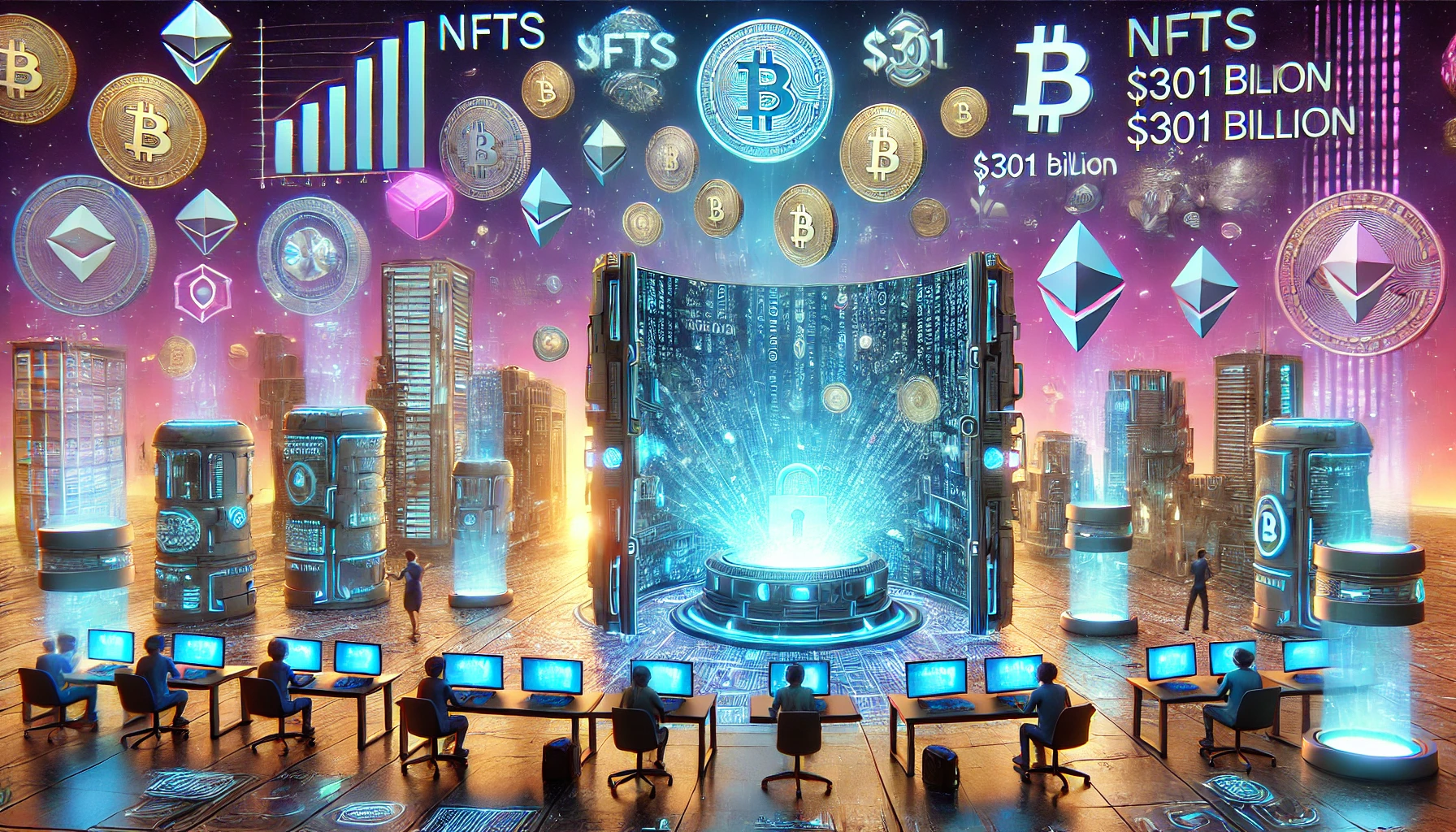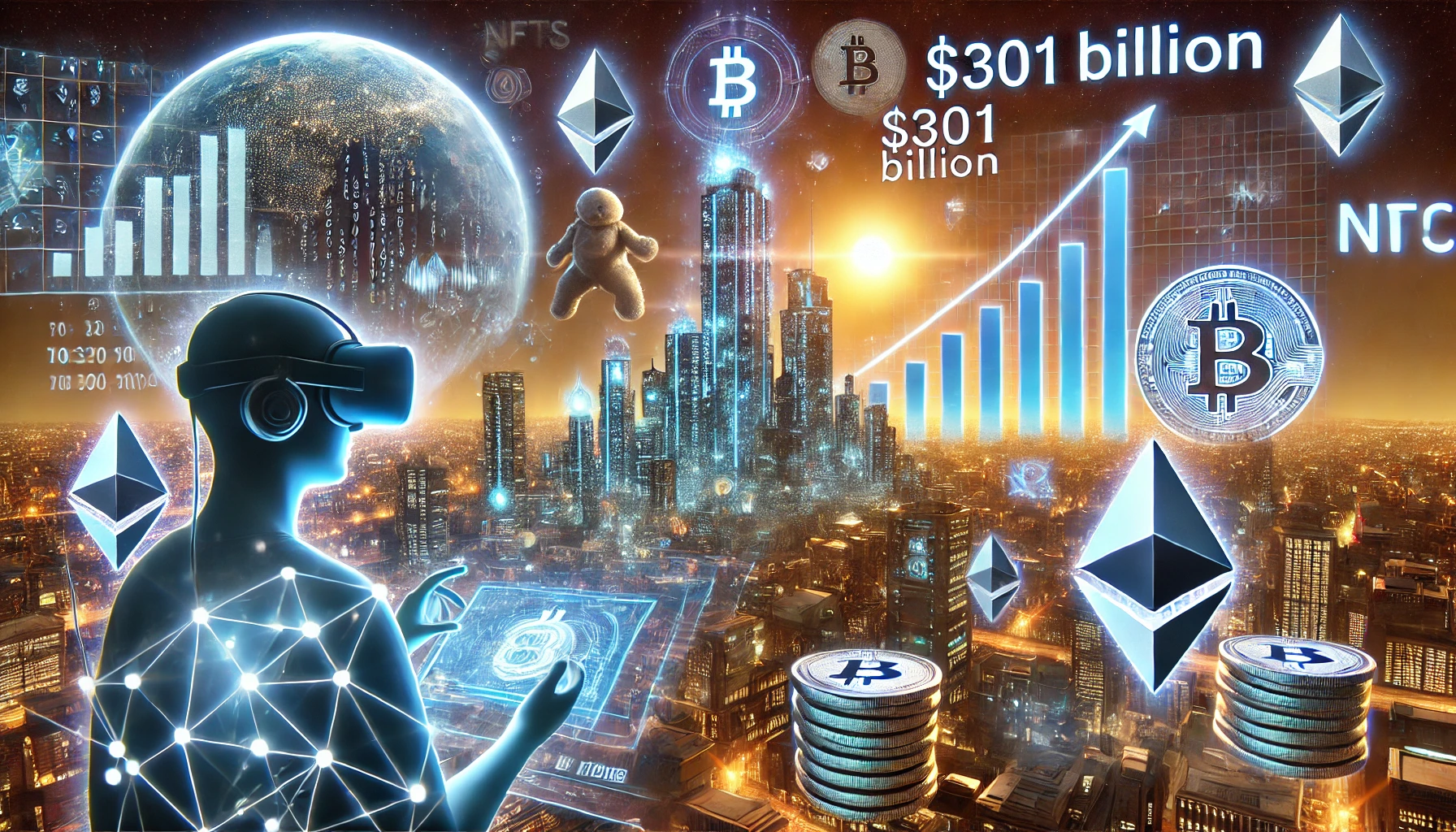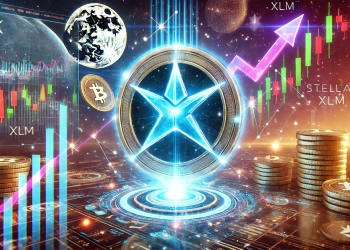GameFi’s tremendous growth is slated to surge astonishingly by 2030, achieving a staggering $301.5 billion valuation, according to Nansen’s incisive report. A catalytic component propelling this exponential expansion involves the decentralization of in-game asset possession via fungible and non-fungible tokens. This novel system introduces players to a supplemental layer of worth, empowering them to not only engage with the game but also accumulate holdings that retain genuine financial potential outside traditional gaming platforms, which have yet to match this model.

Growth through tokenized assets
Tokenization has established the foundation for a projected staggering compound annual growth rate of 68% throughout the coming years, according to Nansen. Curiously, regardless of cryptocurrency market fluctuations, GameFi has shown resilience. For example, in August 2024, daily active wallet numbers increased an impressive 8.94%, signaling growing interest from users despite broader crypto volatility.
This growth is further fueled by improvements in blockchain infrastructure, such as enhanced transaction volume, reduced gas fees, and augmented scalability. Blockchains like opBNB, Ronin, and Immutable are guiding this transformation by offering platforms that are faster, cheaper, and more scalable, making them highly attractive to both developers and players.

True ownership redefines gaming
One of the most disruptive facets of GameFi involves the notion of genuine ownership of in-game assets. Unlike conventional gaming, where progress and holdings are confined within a specific platform, blockchain-based games allow users to possess their digital assets outside the game’s ecosystem. This decentralized structure is revolutionizing the industry, allocating players genuine financial stakes in their virtual accomplishments.
This decentralized model perfectly aligns with the essence of role-playing games (RPGs), which have long been the most popular genre within Web3 gaming circles, accounting for approximately 22% of all such games. In RPGs, players can collect, trade, and even sell their rare virtual possessions as NFTs on online marketplaces, further emphasizing the appeal of distributed ownership over virtual assets. Action-adventure games come in a close second based on genre popularity, holding around a 17% share of the Web3 gaming user base.
Furthermore, the GameFi domain is witnessing a rise in triple-A blockchain experiences—expensively produced games colloquially referred to as “triple-A titles.” While still a fledgling sector representing only 1% of the current catalog, these graphically immersive games are expanding at breakneck speeds. Triple-A games showcase best-in-class visuals and gameplay polish while simultaneously outgrowing their traditional non-blockchain counterparts in terms of user acquisition, foreshadowing a strategic industry shift toward cryptocurrency-driven game development.
Venture Capital Fueling GameFi
Venture capital is fueling GameFi’s leap forward, as evidenced by the $651 million gathered from risk-tolerant investors, according to analytics from Rootdata. This positions GameFi as the fourth most well-funded sector within the greater crypto economy, underscoring its swelling popularity among financial backers. The glut of venture funding continues to turbocharge the creation of deeper, more engrossing virtual worlds, transforming GameFi into an increasingly lucrative opportunity for both studios and players alike, who can earn real cash rewards by engaging within these blockchain-based ecosystems.
Importance of Community
The Nansen report further underscores the foundational role online communities play in boosting the longevity of Web3 games. Titles like Illuvium, Axie Infinity, and Seraph exemplify the mounting pattern of combining intricately crafted gameplay with decentralized economic models that incentivize players with real-world financial rewards for their engagement within thriving digital communities.
Axie Infinity has been particularly influential, popularizing the “play-to-earn” model that allows users to generate income through gameplay. Meanwhile, Illuvium and Seraph stand out for their visually rich environments and complex NFT-based economies, offering players opportunities to trade, sell, or own rare digital assets that enhance both gameplay and player engagement in various ways.

A key factor behind the success of these games is their robust in-game economies. Axie Infinity, for instance, utilizes a dual-token system involving Smooth Love Potion (SLP) for gameplay rewards and Axie Infinity Shards (AXS) for governance. This model gives players both economic incentives and influence over the game’s development, making them integral participants whose opinions shape the ecosystem. Similarly, Illumination and Seraph leverage NFTs to augment player experiences in both depth and engagement, adding strategic layers to the games.
Social Engagement as a Driver Vital to Growth
Nansen’s report also highlights the fundamental importance of social engagement to the thriving Web3 gaming ecosystem. Platforms like X (formerly Twitter), Discord, and Telegram serve as pivotal hubs where players interact, helping to cultivate and maintain energetic gaming communities. These communities are critical not only for maximizing the gameplay experience but also for the sustained expansion of these blockchain-based titles.
Both Axie Infinity and Seraph have nurtured hugely engaged communities, as evidenced by their massive followings on social media and the lightning-quick increases in their user bases. This potent social interaction plays a determining role in propelling the success of these games by generating a dynamic ecosystem where players feel well-connected and invested.
Conclusion
As the GameFi sector continues its evolution, the combination of decentralization of ownership, robust in-game economies, and potent community engagement is establishing the arena for long-lasting growth. The steady technical refinements in blockchain technology, coupled with rising venture capital investment and an expanding player base, indicate the sector is positioned for proceeding accomplishment.
By providing players with the possibility to genuinely own their digital assets and earn real-world rewards, GameFi is reshaping the destiny of gaming, furnishing a singular intersection of amusement and fiscal opportunity that will likely have enduring impacts on the industry. Furthermore, as new revenue streams are uncovered and innovative game mechanics are introduced, GameFi’s potential seems boundless. Though challenges regarding regulation and scalability remain, the sector demonstrates no signs of slowing as it transforms how we consider gaming.
Stay connected with TurkishNY Radio by following us on Twitter and LinkedIn, and join our Telegram channel for more news.








